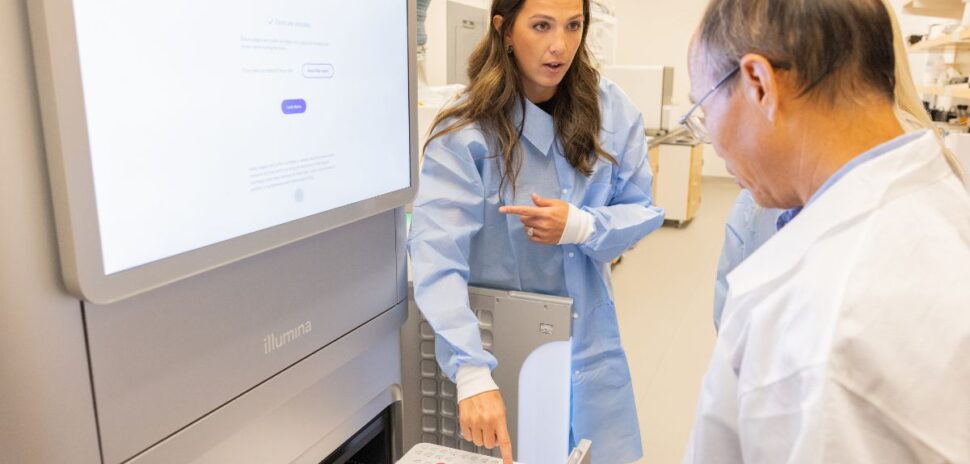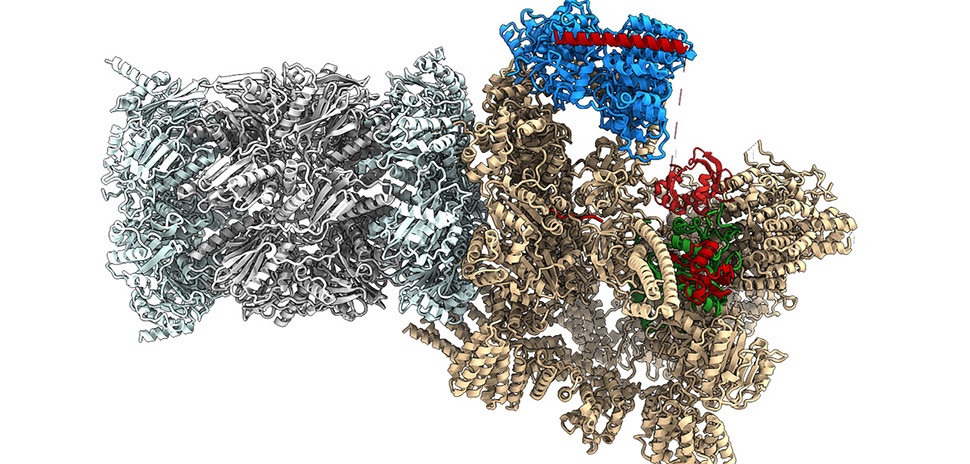
Xinlei (Sherry) Wang, Jenkins Garrett professor of statistics and data science at UTA, says understanding these gene regulators is “central to many biological processes, including growth, development and disease.” [Photo: UTA]
A team from UT Arlington and UT Southwestern Medical School has developed a new computational framework that could help scientists identify key proteins that drive diseases like cancer. By improving the way researchers pinpoint these gene regulators, the tool could lay groundwork for more precise treatments in the future.
UTA announced that the new approach, called BIT (short for Bayesian Identification of Transcriptional Regulators), uses advanced statistics and Bayesian learning to analyze vast epigenomic datasets.
This framework helps scientists identify transcriptional regulators — proteins that control how genes switch on and off — with more accuracy than traditional methods, according to UTA.
“These proteins are central to many biological processes, including growth, development and disease,” said Xinlei (Sherry) Wang, a Jenkins Garrett professor of statistics and data science at UTA and senior author of the study, which was recently published in Nature Communications.
Wang developed the tool, with UTA postdoctoral researcher Zeyu Lu and Lin Xu, a researcher at UT Southwestern Medical School.
The BIT framework

Lin Xu, a researcher at UT Southwestern Medical School, collaborated on the BIT tool to help scientists better identify the gene regulators that can drive diseases like cancer. [Photo via UTA]
BIT uses Bayesian hierarchical modeling to assess probabilities across multiple layers of evidence, rather than analyzing data points in isolation. This allows scientists to more accurately identify which transcriptional regulators (TRs) are active, even in complex biological environments.
“Researchers like me have long struggled to identify accurately which TRs are active in specific biological settings because traditional methods rely on markers like their binding motifs on DNA, which can be imprecise,” Wang said.
She says the team’s research offers a more advanced approach, using a large library of epigenomics data to accurately identify proteins and provide greater interpretability.
Rather than evaluate TRs one by one, BIT integrates vast datasets to give researchers a clearer picture of how multiple regulators function simultaneously. This is particularly valuable for disease research, where identifying the wrong protein target can lead to ineffective or harmful treatments.
Targeting cancer and other diseases
UTA said one of BIT’s most promising applications is in cancer research. By identifying TRs essential for tumor survival, scientists could uncover weak points in cancer cells and develop therapies to shut down those specific regulators.
“This advancement is significant because TRs influence many aspects of human health, and determining which ones are active can provide deeper insight into diseases and potential treatments,” Wang said. “For example, in cancer, dysregulated TRs can cause uncontrolled cell growth, leading to tumors. Knowing which TRs are involved in this process can help researchers develop targeted treatments that block harmful TR activity while preserving normal cellular functions.”
Beyond cancer, BIT could also support research into metabolic disorders, cardiovascular disease, and other conditions in which transcriptional regulation plays a role.
‘Powerful machine learning’ in biomedical discovery
“The development of BIT highlights how powerful machine learning and advanced statistical methods have become in modern biomedical research,” said Lu, whose dissertation adviser was Wang, with Xu serving as co-advisor.
As more scientists are turning to computational tools to analyze complex genetic and epigenomic data, he says, models like BIT can be essential for uncovering new biological insights.
By bridging the gap between raw epigenomic data and meaningful discoveries, BIT could accelerate breakthroughs in drug development, disease diagnostics, and personalized medicine.
The research was supported by the Rally Foundation, Sam Day Foundation, Children’s Cancer Fund (Dallas), the Cancer Prevention and Research Institute of Texas, and the National Institutes of Health.
Don’t miss what’s next. Subscribe to Dallas Innovates.
Track Dallas-Fort Worth’s business and innovation landscape with our curated news in your inbox Tuesday-Thursday.
R E A D N E X T
-
Funding 25 projects across 17 institutions, the Dallas-founded nonprofit is prioritizing metastatic disease, precision medicine, and closing care gaps.
-

University of Texas at Arlington reported its projects contributed $59 million to the national economy last year, an increase of 39% from 2023, according to a new report from the Institute for Research on Innovation and Science (IRIS).
-

What started as a ‘friendly conversation’ on the UNTHSC campus could lead to a breakthrough in treating glaucoma—the leading cause of irreversible blindness, affecting over 80 million people worldwide. With AI, the lab team can speed up the process of screening billions of virtual compounds to attack the problem.
-

OncoNano’s innovative approach to cancer treatment leverages nanotechnology to bring tumors into the light.
-

The protein—implicated in blood cancers like leukemia, lymphoma, and multiple myeloma—was decoded in near-atomic detail by UT Southwestern researchers, including Nobel Prize winner Bruce Beutler. In lab models, turning off midnolin wiped out up to 92% of cancer cells—with minimal impact on healthy ones, according to UT Southwestern.